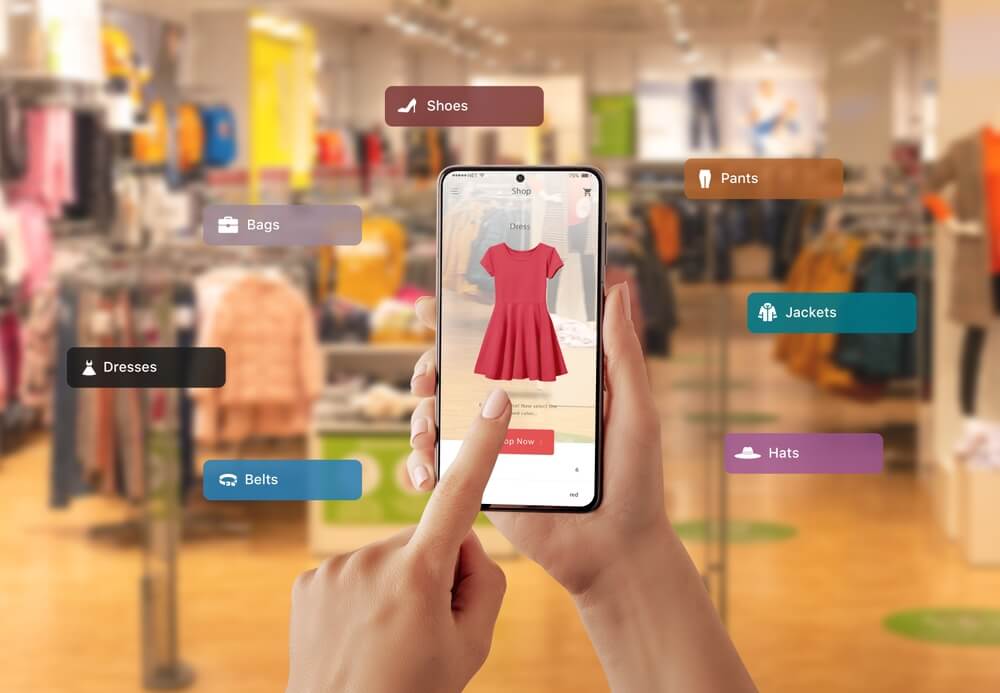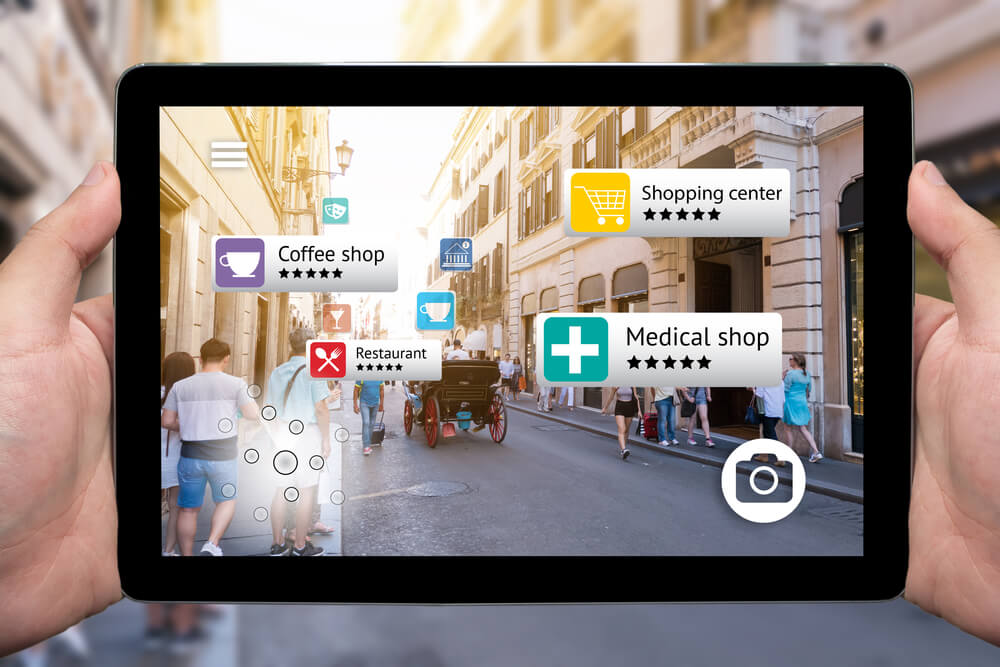
AR + VR + eCommerce: What Are the Top 3 Trends To Watch Now?
In the ever-evolving landscape of ecommerce, the fusion of augmented reality (AR) and virtual reality (VR) has unlocked unprecedented business opportunities.
As an ecommerce SEO agency, Digital Authority Partners (DAP) explores AR and VR trends changing online shopping. This article discusses the latest innovations, including the following:
- Top three pivotal trends in AR and VR integration within ecommerce platforms.
- Integrating AR and VR into ecommerce platforms.
- Challenges and considerations.
- Future of these technological advancements.
Explore the cutting edge of digital realities and online commerce to redefine consumer engagement and satisfaction. Let’s go!
Are you struggling to elevate your e-commerce game? Watch this video to learn how DAP can do that for you!
The Top 3 Trends Defined
In today's rapidly evolving ecommerce landscape, the fusion of AR and VR technologies has become a catalyst for transformative shopping experiences. As an ecommerce SEO agency delving into the forefront of digital innovation, it is pivotal to explore the trends reshaping the online retail sphere.
Here are the top three of these trends that are redefining customer engagement and satisfaction within the ecommerce realm, establishing new benchmarks for immersive online retail encounters:
Trend 1: Immersive Shopping Experiences
AR and VR technologies spearhead the creation of immersive and interactive shopping environments. With AR overlays and VR simulations, customers engage in lifelike experiences, virtually interacting with products before purchase. This trend transcends traditional online shopping, fostering deeper connections between consumers and products.
Ecommerce platforms leverage AR to enable virtual product placement, allowing users to visualize items within their physical spaces through smartphones or tablets. Similarly, VR technologies immerse shoppers in simulated environments, replicating in-store experiences from the comfort of their homes.
Here are five specific ways that ecommerce platforms are leveraging AR and VR to elevate customer experiences:
- IKEA Place is an AI-powered app that lets customers virtually place furniture within their homes, offering a lifelike visualization of how products fit into their space and enriching their shopping experience.
- Sephora is Artist enables users to try makeup virtually, experimenting with different shades and products before making a purchase, ensuring confidence in their choices.
- Wayfair Spaces utilizes VR to create immersive shopping experiences, allowing users to explore lifelike room settings and visualize furniture and décor in a contextual environment.
- Adidas' AR Shoe Try-On employs AR technology, enabling customers to virtually try on shoes using their smartphone cameras, offering a realistic view of the fit and style.
- Warby Parker's Virtual Try-On utilizes AR for virtual eyeglass try-ons, allowing customers to see how different frames look on their faces, revolutionizing the online eyewear shopping experience.
Trend 2: Virtual Try-Ons and Product Demos
The ascent of AR-powered virtual try-ons and VR-based product demonstrations marks a paradigm shift in consumer decision-making processes.
AR try-on features enable customers to virtually "try before they buy," whether trying on clothing, testing makeup shades, or experimenting with home decor. This enriches the shopping experience and reduces return rates by ensuring confident purchase decisions.
VR product demos, on the other hand, transport consumers into detailed, interactive showcases, offering an in-depth exploration of products. VR demos help consumers understand and trust products by showing intricate details and functions. These technologies allow brands, such as Warby Parker and L'Oréal, to offer virtual eyeglasses and makeup try-ons, increasing customer satisfaction and loyalty.
Here are five distinct ways in which the integration of AR and VR impacts consumer decision-making and mitigates return rates:
- Confidence in purchase. AR-powered virtual try-ons instill confidence in consumers by allowing them to visualize products in real-life scenarios, reducing hesitancy, and encouraging informed purchases.
- Reduced return rates. VR product demonstrations offer detailed insights into product functionalities, minimizing misunderstandings and reducing return rates due to inaccurate expectations.
- Enhanced engagement. Interactive AR experiences increase customer engagement, fostering a deeper connection with products, thereby reducing the likelihood of returns driven by disinterest post-purchase.
- Customization and personalization Tailored AR experiences enable customers to personalize products virtually, leading to fewer returns driven by dissatisfaction with customization choices.
- Accurate sizing and fit. AR try-ons for apparel and accessories enable customers to assess sizing and fit accurately, significantly reducing returns due to incorrect size estimations or style mismatches.
Trend 3: Personalized and Contextual Shopping
The integration of AR and VR fosters highly personalized and context-aware shopping experiences. These emerging technologies leverage consumer data to tailor recommendations and curate shopping environments.
Ecommerce platforms can offer personalized product suggestions and immersive shopping spaces customized to individual tastes by analyzing user preferences and behaviors. AR-enhanced recommendation engines, such as those utilized by Amazon and Alibaba, optimize product discovery by presenting personalized suggestions overlaid on the user's physical surroundings.
Moreover, VR-powered storefronts recreate personalized shopping environments, adapting layouts and product displays based on individual preferences. This personalized approach heightens user engagement, drives conversion rates, and nurtures long-term customer relationships.
If your business has partnered with an ecommerce SEO agency, recognizing how these technologies curate unique experiences and guide consumer choices is essential. Here are five distinct ways in which Ecommerce platforms leverage AR and VR to provide tailored recommendations and create exceptional shopping environments:
- Contextual product placement. AR-enhanced product suggestions overlay contextual recommendations within the user's physical space, guiding them to personalized choices based on preferences and surroundings.
- Virtual personal shopping assistants. VR-powered assistants create personalized shopping environments, offering guided tours and recommendations tailored to individual tastes and previous interactions.
- Adaptive storefronts. AR-enabled storefronts dynamically adapt layouts and product displays based on user preferences, providing a unique browsing experience with tailored product showcases.
- AI-driven recommendations. Integrating AI-powered content marketing with AR suggests products based on browsing history and user behavior, delivering highly personalized recommendations for an enriched shopping journey.
- Immersive brand Experiences. VR environments immerse users in branded landscapes, allowing for experiential interactions and personalized product engagements, fostering a deeper brand connection, and enhancing purchasing decisions.
Integrating AR and VR into Ecommerce Platforms

Integrating AR and VR technologies into existing platforms involves practical considerations for seamless implementation. As an ecommerce SEO agency working through these dynamic trends, understanding the crucial factors for integration is critical.
Here are five specific practical considerations for seamlessly integrating AR and VR technologies into existing ecommerce platforms:
- Scalability and compatibility. Make sure that AR and VR solutions can scale with the platform's growth and are compatible with existing infrastructure, enabling smooth integration without disruptions.
- User interface and experience. Prioritize a user-friendly interface and seamless experience to encourage adoption, ensuring that AR and VR functionalities are intuitive and accessible to all users.
- Content creation and management. Establish efficient workflows for creating and managing AR/VR content, including product models, interactive elements, and immersive environments.
- Data security and privacy: Implement robust security measures to safeguard user data and privacy, adhering to industry standards and regulations to build consumer trust.
- Testing and optimization. Conduct thorough testing phases to identify and address technical glitches or user experience issues, optimizing the AR/VR features for flawless performance.
Transitioning into these transformative technologies requires comprehensive understanding and strategic planning to future-proof your business. Here are five technical and resource requirements for every business and ecommerce SEO agency aiming to adopt AR and VR trends:
- Specialized development skills: hiring or partnering with experts proficient in AR/VR development to ensure high-quality implementation aligned with business objectives.
- Hardware and software investments: investing in compatible devices, software, and tools necessary for AR/VR integration, considering the costs and technological specifications.
- Bandwidth and server capacity: assessing and potentially upgrading server capacities and bandwidth to accommodate data-heavy AR/VR interactions without compromising performance.
- Training and education: providing training programs to employees for operating and managing AR/VR technologies, fostering internal expertise and efficient utilization.
- Budget allocation: allocating sufficient resources and budget for ongoing maintenance, updates, and enhancements of AR/VR functionalities within the ecommerce platform, ensuring sustained performance and innovation.
Challenges and Considerations
Despite the transformative benefits, ecommerce businesses encounter challenges when adopting AR and VR. With the ecommerce SEO landscape still evolving, it is crucial to address these hurdles that often accompany the adoption of cutting-edge technologies.
Here are five specific challenges ecommerce businesses might face when implementing AR and VR:
- Cost considerations. The substantial initial investment required for AR and VR integration, including hardware, software, development, and maintenance costs, can pose a financial challenge for businesses, especially smaller enterprises.
- Technical complexity. Implementing AR and VR technologies demands specialized technical expertise, and development, integration, and maintenance complexities can hinder seamless execution.
- User adoption and familiarity. Overcoming user resistance or hesitation toward adopting new technologies, particularly among demographics less familiar with AR/VR, presents a significant adoption barrier.
- Content creation and management. Generating and handling captivating AR/VR content necessitates allocated resources, technical expertise, and an optimized workflow.
- Interoperability and standards. Ensuring compatibility and interoperability between AR/VR devices, platforms, and software can pose integration challenges and hinder seamless experiences.
While having a clear purpose for your ecommerce business is excellent, overcoming these obstacles is essential to unlocking the full potential of AR and VR technologies. To mitigate these challenges, companies can opt for phased implementations, prioritize user-friendly interfaces, and invest in educating consumers about the value and ease of using AR and VR functionalities.
Here are five solutions or approaches to overcome these hurdles:
- Start with the MVP approach. Begin with a minimum viable product (MVP) strategy to test the waters, gradually scaling up AR/VR functionalities based on user feedback and market response.
- Invest in training and education. Educate both internal teams and customers about the benefits and usability of AR/VR, reducing user resistance through workshops, tutorials, and demos.
- Collaborate with experienced partners. Partnering with specialized AR/VR development agencies or experts can streamline the integration, leveraging their expertise and resources.
- Prioritize user experience. Focus on intuitive interfaces and compelling user experiences, ensuring that AR/VR functionalities add value and ease of use for consumers.
- Aim for constant iteration and improvement. Embrace an iterative approach, consistently gathering feedback and making iterative improvements to refine AR and VR experiences based on user insights and technological advancements.
Future Outlook: AR, VR, and Ecommerce

The convergence of AR, VR, and ecommerce is on the cusp of transformative advancements that will redefine online retail experiences. The evolution of technology will propel seamless integration and refinement of AR and VR capabilities, fundamentally reshaping the ecommerce landscape. This evolution will be evident in the following future AR/VR technologies:
- Expanded integration of AR glasses and wearables. Integrating AR functionalities into everyday wearables will create a pervasive augmented reality environment, transforming how consumers do retail. Consumers can expect a seamless transition between virtual and real-world interactions, revolutionizing how they engage with products.
- Immersive social commerce. Future innovations will lead to integrating social media platforms with AR and VR technologies, enabling interactive, shared shopping experiences. Imagine shopping with friends in a virtual space, trying on products together, and seeking real-time opinions, fostering a sense of community-driven decision-making.
- AI-driven hyper-personalization. Fusing AI algorithms with AR and VR will pave the way for hyper-personalized interactions. These technologies will anticipate consumer preferences, providing tailor-made product suggestions and immersive shopping environments that evolve based on individual behaviors and preferences in real time.
- AR cloud advancements. Advancements in AR cloud technology will create persistent, shared augmented spaces. These spaces will transcend individual devices, allowing for continuous, synchronized experiences across various locations and a seamless blend of virtual and physical shopping environments.
- Enhanced multi-sensory experiences. Innovations in haptic feedback and sensory technologies will elevate virtual shopping experiences. Consumers will see, hear, and feel textures, shapes, and weights of products virtually, enhancing their confidence and connection with items before purchase.
- Extended reality (XR) unification. Integrating AR, VR, and Mixed Reality (MR) into a unified Extended Reality (XR) ecosystem will offer a spectrum of experiences. From completely virtual simulations to augmented overlays on the physical world, this unified ecosystem will cater to diverse consumer preferences and use cases.
These innovations collectively pave the way for a future where ecommerce transcends conventional boundaries, creating immersive, personalized, and interconnected shopping experiences that seamlessly integrate with everyday life.
Summing Up
AR and VR technologies are not merely futuristic concepts but integral tools reshaping the very essence of ecommerce. Their evolution promises a future where immersive, personalized, and interconnected shopping experiences seamlessly integrate into everyday life, transcending conventional boundaries.
From augmented reality wearables to AI-driven personalization, these innovations redefine consumer engagement, foster community-driven decision-making, and set new benchmarks for customer-centric commerce. Embracing the transformative power of AR and VR is pivotal for every business and ecommerce SEO agency aiming to stay ahead in a dynamically evolving ecommerce landscape.
Ready to harness the potential of AR and VR to transform your ecommerce strategy? Connect with us at Digital Authority Partners (DAP) to explore how these cutting-edge technologies can elevate your online retail game.
Want To Meet Our Expert Team?
Book a meeting directly here




